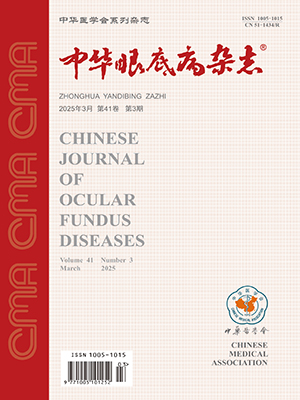Objective To compare the characteristics of the ocular fundus of exudative age-related macular degeneration (AMD) with polypoidal choroidal vasculopathy (PCV). Methods The photographs of ocular fundus of 123 patients (137 eyes) with exudative AMD and 42 patients (48 eyes) with PCV diagnosed by fundus photography, fundus fluorescein angiography (FFA), and indocyanine green angiography (ICGA) were retrospectively analyzed. Results In 137 eyes with exudative AMD, 16 eyes (11.7%) had classic neovascularization (CNV), 121 (88.3%) had occult CNV. In the eyes with occult CNV, 42 eyes (34.7%) had hot spots, 74 eyes (61.2%) showed plaque hyperfluorescences and 2 eyes (1.7%) had hot spots with PCV in ICGA. In 48 eyes with PCV, 7 eyes (14.6%) had subretinal reddish-orange lesions, 2 eyes (4.2%) of the polypoidal dilations with branching vascular network were detected with FFA, 36 eyes (75.0%) demonstrated polypoidal dilations with branching vascular network, and 12 eyes (25.0%) showed scattered polypoidal dilations without identifiable continuous branching vascular network, 16 eyes (33.3%) had the polypoidal dilations resembling a cluster of grapes, and 32 eyes (66.3%) showed the polypoidal dilations as several solitary round aneurismal dilations. The polypoidal dilations showed either a washout of the dye from the polyp with staining of its walls or staining of the dye in the late phase of ICGA. Conclusions The different features of exudative AMD and PCV in the ICGA, and the PCV with subretinal reddish-orange lesions are useful in the differentiate diagnosis of the both diseases. (Chin J Ocul Fundus Dis,2004,20:307-309)
Citation: WEN Feng,WU Dezheng,CHEN Yanli. Characteristics of the ocular fundus of exudative age-related macular degeneration and polypoidal choroidal vasculopathy. Chinese Journal of Ocular Fundus Diseases, 2004, 20(5): 307-309. doi: Copy
Copyright © the editorial department of Chinese Journal of Ocular Fundus Diseases of West China Medical Publisher. All rights reserved




